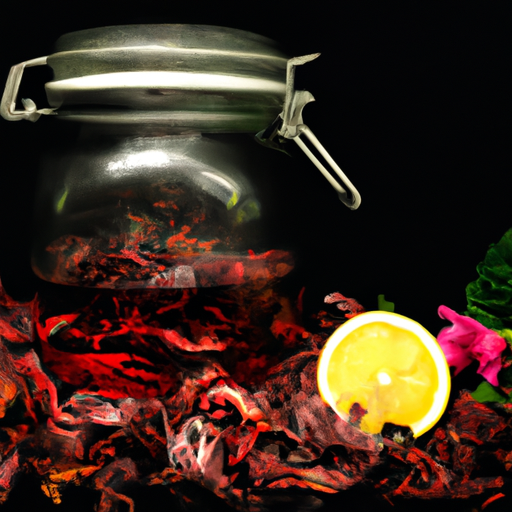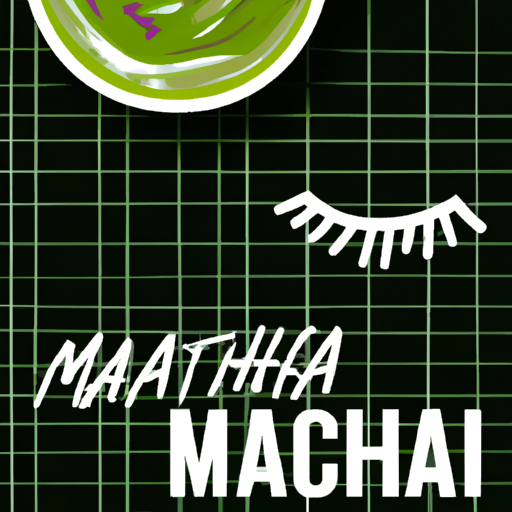I’m totally into matcha powder! This multi-purpose component can serve various functions. Originating from finely ground green tea leaves, matcha is celebrated for its intense green hue and rich, earthy taste. It’s loaded with antioxidants and is proven to enhance metabolic rates and encourage a sense of calm.
In this article, I’ll share some of my favorite ways to mix matcha powder into my daily routine.
One of the most popular ways to enjoy matcha powder is in a matcha latte. This creamy and frothy drink is perfect for a morning pick-me-up or an afternoon treat. Simply mix matcha powder with hot water and whisk until it’s smooth and frothy. Then, add your favorite milk and sweetener and enjoy! If you don’t have a whisk, you can also use a blender or a milk frother to create the same effect.
Key Takeaways
- Matcha powder can be used in cooking and baking to add a unique twist to baked goods, and goes well with citrus flavors, berries, vanilla, coconut, and chocolate.
- Matcha can be mixed with different types of teas and coffee for unique and refreshing drinks, and can be used in cocktails such as matcha margaritas, mojitos, and martinis.
- Matcha can be paired with spirits and mixers and used in vinaigrette variations and creamy salad dressings.
- Hosting a brunch or tea party is a great way to showcase matcha recipes and promote wellness and meaningful conversations about health.
Understanding Matcha Powder
You’ll love how matcha powder brings a unique, earthy flavor to your recipes! But before you start mixing it with other ingredients, it’s important to understand the different grades of matcha powder.
The highest quality matcha powder is called ceremonial grade, which is made from young tea leaves that have been shade-grown and stone-ground into a fine powder. This grade of matcha has a rich flavor and aroma, and is often used in traditional Japanese tea ceremonies.
However, culinary grade matcha is more commonly used in cooking and baking. It’s made from older tea leaves that have been sun-grown and may have a slightly bitter taste. Despite this, culinary grade matcha is still a great option for mixing with other ingredients in your recipes.
Not only does matcha powder add a delicious flavor to your dishes, but it also has numerous health benefits. Matcha is high in antioxidants, which can help protect your body from damage caused by free radicals. It also contains caffeine and L-theanine, which can improve alertness and focus while reducing stress.
Now that you understand the different grades of matcha powder and its health benefits, let’s move on to one of the most popular ways to enjoy matcha: the matcha latte.
Matcha Latte
If you’re looking for a creamy and indulgent beverage, what could be better than a frothy and flavorful matcha latte? Matcha lattes have become increasingly popular in recent years due to their delicious taste and numerous health benefits. Matcha powder is packed with antioxidants, which can help improve brain function, boost metabolism, and even promote healthy skin.
To make a matcha latte, you’ll need a few simple ingredients: matcha powder, milk (or a non-dairy alternative), and a sweetener of your choice. The key to a perfectly frothy latte is to use a milk frother or a blender to mix the ingredients together. If you’re feeling adventurous, there are numerous variations of matcha latte recipes that you can try, such as adding vanilla extract, cinnamon, or even coconut cream.
In addition to drinking matcha lattes, you can also incorporate matcha powder into your skincare routine. Matcha contains anti-inflammatory properties that can help reduce redness and irritation in the skin. To make a DIY matcha face mask, mix together one teaspoon of matcha powder with one tablespoon of honey and apply to your face for 10-15 minutes. Rinse off with warm water and enjoy the benefits of a glowing complexion.
Moving on to the next topic, smoothies are another delicious way to incorporate matcha powder into your diet.
Smoothies
Indulge in a cool and refreshing treat with a matcha smoothie! Smoothies are the perfect way to start your day or to beat the heat, and adding matcha powder to it gives it an extra kick of antioxidants and energy.
For a delicious matcha infused smoothie bowl, blend together frozen banana, almond milk, and a teaspoon of matcha powder. Top it off with your favorite toppings such as sliced strawberries, granola, and chia seeds!
Smoothie bowls are an excellent way to get all the nutrients your body needs in one delicious package. With matcha powder, you can enjoy a smoothie bowl that is not only delicious but also packed with health benefits.
Matcha powder is known for its high levels of antioxidants, which help to protect your body from free radicals. It’s also a great source of caffeine, which can give you an energy boost without the jitters.
If you’re looking for a fun and creative way to enjoy matcha powder, try adding it to your baked goods. Matcha powder can be used in a variety of baked goods, including cakes, brownies, and cookies. It adds a unique flavor and also gives your baked goods a vibrant green color.
With its earthy taste and health benefits, matcha powder is the perfect addition to any recipe.
Baked Goods
Get ready to sink your teeth into a soft and fluffy matcha-infused cake that’ll transport your taste buds to a whole new level of flavor.
Baking with matcha powder is a great way to add a unique twist to your favorite baked goods. Matcha is a finely ground powder made from green tea leaves and has a distinct earthy flavor that pairs well with many other ingredients.
When it comes to flavor pairings, matcha powder goes well with citrus flavors like lemon and orange, as well as with berries like raspberry and blueberry. Additionally, matcha can be paired with vanilla, coconut, and chocolate to create a rich and decadent dessert.
To get the most out of your matcha flavor, it’s important to use high-quality powder and to mix it well with your other ingredients.
When baking with matcha, it’s important to keep a few tips in mind. First, be sure to sift the matcha powder before using it to prevent clumps in your batter. Additionally, it’s best to use a light hand when mixing the batter to avoid overworking it, which can result in a tough and dense cake. Finally, be sure to adjust your baking time and temperature as matcha can cause your baked goods to brown more quickly than usual.
As delicious as matcha-infused baked goods are, sometimes we want something a little stronger. In the next section, I’ll show you how to mix matcha powder into cocktails for a refreshing and unique drink experience.
Cocktails
When incorporating this finely ground green tea into your cocktail creations, you’ll discover a whole new level of flavor to enjoy. Matcha powder adds a unique earthy and bitter flavor that pairs well with a variety of spirits and mixers.
Here are some ideas to get you started:
- Matcha Mojito: Muddle fresh mint and lime in a glass, add matcha powder, rum, and a splash of soda water. Garnish with a lime wheel and mint sprig.
- Matcha Margarita: Combine tequila, matcha powder, lime juice, and agave syrup in a shaker with ice. Shake and strain over ice. Garnish with a lime wheel and salt rim.
- Matcha Mocktail: Mix matcha powder with coconut water, pineapple juice, and a splash of lime juice. Serve over ice with a pineapple wedge.
But matcha powder isn’t just for cocktails. It can also add depth to savory dishes like soups, sauces, and marinades. Try mixing it with miso paste, soy sauce, and ginger for a delicious glaze on grilled chicken or tofu.
Next up, let’s explore how matcha powder can enhance everyone’s favorite frozen treat: ice cream.
Ice Cream
I absolutely love matcha ice cream! In fact, I think it’s one of the best ways to enjoy matcha powder.
There are two types of matcha ice cream that I particularly enjoy: matcha soft serve and matcha ice cream sandwiches.
Let’s dive into why these two options are so delicious and how you can enjoy them at home.
Matcha Soft Serve
You’ll love the creamy, rich flavor of matcha soft serve, made by mixing matcha powder into vanilla ice cream. Matcha soft serve is a popular and delicious treat that has become increasingly popular in recent years. It is a great way to enjoy the health benefits of matcha in a fun and tasty way.
There are many homemade recipes available for matcha soft serve, but one of the simplest and most delicious is to mix matcha powder into softened vanilla ice cream. Simply add the matcha powder to the softened ice cream and mix until it’s evenly distributed. Then, freeze the mixture until it reaches your desired consistency.
Serve it in a cone or a bowl, and enjoy the creamy, earthy flavor of the matcha. If you’re feeling adventurous, try making a matcha ice cream sandwich by placing a scoop of matcha soft serve between two cookies or wafers. It’s a fun and delicious way to enjoy matcha, and the soft serve adds a unique twist to a classic dessert.
Matcha Ice Cream Sandwich
I just finished indulging in some delicious matcha soft serve, and now I’m ready for my next matcha-filled treat. One of my favorites is a matcha ice cream sandwich.
To make this sweet treat, I whip up a batch of homemade matcha cookies using my go-to matcha cookie recipe. These cookies are perfectly balanced with a subtle matcha flavor that doesn’t overpower the ice cream.
Once the cookies have cooled, I scoop a generous amount of my favorite ice cream onto one cookie and top it with another cookie to create a sandwich. But the real question is, what is the best ice cream pairing for matcha cookies?
My personal favorite is vanilla bean ice cream. The creamy vanilla flavor complements the subtle matcha taste of the cookies, creating a perfect balance of sweetness. Other great pairings include green tea ice cream or even a fruity sorbet.
Now, let’s move on to the next section about salad dressings.
Salad Dressings
Adding a touch of sweetness to your salad dressings with a hint of honey or maple syrup can elevate the flavor profile of your matcha powder. Matcha powder has a strong flavor that can be overpowering if not balanced well with other ingredients.
Here are some vinaigrette variations and healthy dressing options to try with matcha powder:
- Honey Mustard: Mix matcha powder, dijon mustard, honey, apple cider vinegar, and olive oil for a zesty and sweet dressing.
- Sesame Soy: Combine matcha powder, soy sauce, rice vinegar, sesame oil, and honey for an Asian-inspired dressing.
- Lemon Garlic: Whisk together matcha powder, lemon juice, garlic, honey, and olive oil for a tangy and garlicky dressing.
- Orange Ginger: Mix matcha powder, orange juice, ginger, honey, and olive oil for a citrusy and spicy dressing.
- Avocado Lime: Blend matcha powder, avocado, lime juice, honey, and water for a creamy and refreshing dressing.
These dressings not only add flavor to your salads, but also provide health benefits from the matcha powder. Matcha powder is high in antioxidants and can boost metabolism and energy levels. With these dressings, you can enjoy the benefits of matcha powder without sacrificing taste.
Moving on to energy balls/bars, incorporating matcha powder into these snacks can provide a natural energy boost.
Energy Balls/Bars
I absolutely love making healthy snacks to keep me energized throughout the day, and matcha powder is one of my favorite ingredients to use.
Two of my go-to recipes are matcha energy balls and matcha granola bars. These snacks not only taste delicious, but they also give me a boost of energy thanks to the caffeine in matcha.
Matcha Energy Balls
You can easily satisfy your sweet tooth and fuel your body with these matcha energy balls. Matcha powder is known to boost energy levels and provide a gentle caffeine kick, making it a perfect ingredient for energy bites.
Here are a few ideas on how to make delicious matcha energy balls:
- Matcha protein bites: Mix matcha powder with protein powder, almond flour, dates, and almond butter for a protein-packed snack.
- Matcha chia pudding bites: Blend matcha powder with chia seeds, coconut milk, honey, and vanilla extract. Roll the mixture into balls and refrigerate for a healthy and satisfying snack.
- Matcha coconut bites: Combine matcha powder, shredded coconut, almond flour, and coconut oil for a sweet and nutty energy bite.
- Matcha almond bites: Mix matcha powder, almond flour, almond butter, and honey together. Roll into balls and enjoy!
If you’re looking for a quick and easy snack to enjoy on the go, matcha energy balls are a great option. They’re easy to make and can be customized to fit your taste preferences.
Now, let’s move on to another delicious matcha snack – matcha granola bars.
Matcha Granola Bars
Crunchy oats and chewy dried fruit come together in a matcha-infused bar that will transport your taste buds to a verdant forest. Matcha granola bars are a perfect snack to have on hand when you need a quick energy boost, or a satisfying treat. These bars are easy to make and can be customized to suit your taste preferences with a variety of granola variations.
To make matcha granola bars, start by combining rolled oats, chopped nuts, seeds, and dried fruit in a bowl. In a separate bowl, mix together melted coconut oil, honey, and matcha powder. Pour the wet ingredients over the dry ingredients and stir until everything is evenly coated. Spread the mixture evenly into a baking dish and press down firmly. Bake at 350°F for about 20 minutes, or until golden brown. Once cooled, cut into bars and store in an airtight container for up to a week.
| Granola Variations | Nutritional Benefits |
|---|---|
| Add chocolate chips or cocoa nibs for a rich, indulgent flavor. | Matcha is high in antioxidants and can boost metabolism. |
| Swap out the nuts and seeds for different varieties to suit your taste preferences. | Oats are a good source of fiber and can help regulate blood sugar levels. |
| Use dried cranberries, cherries, or apricots for a fruity twist. | Coconut oil contains healthy fats that can improve brain function. |
| Add coconut flakes for a tropical touch. | Honey is a natural sweetener that also has antibacterial properties. |
Matcha granola bars are a delicious and nutritious snack that can be enjoyed any time of day. When you’re in the mood for something crunchy and sweet, give these bars a try. Next, we’ll move on to discussing how to incorporate matcha into soups.
Soups
Adding matcha powder to soups enhances the flavor and adds a unique earthy taste to the dish. Matcha is a versatile ingredient that can be paired with different soup variations.
For example, matcha powder can be added to creamy soups like pumpkin or sweet potato soup to give it a subtle green tea flavor. Matcha also pairs well with broths like miso soup, adding depth and complexity to the dish.
When incorporating matcha powder into soups, it’s important to start with a small amount and gradually increase it until the desired taste is achieved. A good rule of thumb is to use about 1/2 teaspoon of matcha powder per serving. However, the amount may vary depending on the type of soup and personal taste preferences. It’s also important to whisk the matcha powder into a small amount of liquid first to ensure there are no clumps before adding it to the soup.
Experimenting with matcha in soups is a fun way to get creative in the kitchen. Some pairing suggestions include adding matcha to vegetable soups like broccoli or asparagus soup for a fresh twist. Another idea is to use matcha in a chilled soup like gazpacho to give it a unique flavor.
The possibilities are endless when it comes to incorporating matcha into soups, so don’t be afraid to experiment and find your own favorite combinations.
Adding matcha powder to soups is a simple yet effective way to elevate the taste of your dish. With its unique flavor profile and versatility, matcha can be paired with a variety of soup variations to create delicious and healthy meals.
Next, I’ll share some tips for experimenting with matcha in different types of dishes.
Experimenting with Matcha
I love experimenting with matcha and trying new flavor combinations. Mixology with matcha has become one of my favorite hobbies, and I enjoy sharing my recipes with others.
It’s always exciting to see how different ingredients can enhance the flavor and health benefits of matcha, and I’m constantly inspired to try new combinations.
Trying new flavor combinations
You might feel like a culinary adventurer as you explore new flavor combinations to pair with your matcha powder. Mixing matcha with savory dishes is a great way to add depth and complexity to your cooking. For instance, you can add matcha powder to your pasta sauce, soup, or even grilled meat. The bitterness in matcha complements the umami flavor found in these dishes, resulting in a unique and satisfying taste.
Another option is to pair matcha with different types of teas. This is a great way to experiment with the flavor of matcha without compromising its taste. For instance, you can mix matcha with jasmine green tea or oolong tea to create a refreshing and aromatic drink. You can also add matcha to your black tea to create a bold and energizing blend. The possibilities are endless when it comes to pairing matcha with different teas.
With these exciting flavor combinations, you can elevate your matcha game to the next level. But why stop there? Next, let’s delve into the world of mixology with matcha and discover how to create delicious and healthy drinks.
Mixology with Matcha
Get ready to explore the world of matcha mixology and create some delicious and healthy drinks! If you’re a coffee lover, try mixing matcha powder into your morning cup of joe for a healthy boost of energy. Matcha contains caffeine and L-theanine, which work together to provide a sustained energy boost without the jitters that can come from regular coffee.
You can also mix matcha with other beverages like almond milk or coconut water for a refreshing and nutritious drink. Incorporating matcha into cocktails is also becoming increasingly popular. Matcha adds a unique flavor and vibrant green color to cocktails, making them both delicious and Instagram-worthy.
Some popular matcha cocktail recipes include a Matcha Margarita, a Matcha Mojito, and a Matcha Martini. Mixing matcha with alcohol can also help to reduce the negative effects of alcohol on the body, as matcha is high in antioxidants and can help to protect the liver.
So go ahead, get creative and try out some matcha mixology for your next happy hour! As you experiment with different matcha recipes, don’t forget to share your creations with others. Sharing recipes with friends and family is a great way to spread the love of matcha while also promoting healthy living.
So gather your loved ones and enjoy some delicious matcha drinks together!
Sharing recipes with others
Sharing your favorite healthy recipes with friends and family is one of my favorite pastimes. Not only does it bring people together over a shared interest in food, but it can also lead to meaningful conversations about health and wellness.
When it comes to matcha powder, there are countless recipes out there that incorporate this nutrient-packed ingredient. From smoothies to baked goods, the possibilities are endless.
One of my favorite ways to share my matcha creations with others is by hosting a brunch or tea party. It’s the perfect occasion to showcase a variety of matcha recipes, such as matcha pancakes, matcha latte, matcha muffins, and matcha smoothie bowls.
I like to provide my guests with recipe cards so they can recreate their favorites at home. Sharing tips and ideas with others not only encourages them to try new things, but it also helps to build a community of like-minded individuals who are passionate about healthy living.
Frequently Asked Questions
What is the history of matcha powder and how has it been used traditionally?
Matcha powder has a rich history in Japanese culture, dating back to the 12th century.
Traditional matcha consumption involves whisking the powder with hot water to create a frothy tea that is then sipped slowly. This preparation method allows for the full flavor and health benefits of the tea to be enjoyed.
Matcha powder usage has evolved over time, with the powder now being used in a variety of recipes such as smoothies, baked goods, and even savory dishes. However, it’s important to remember the traditional preparation method and appreciate the cultural significance of matcha powder in Japanese tea ceremonies.
Can matcha powder be used for cooking savory dishes, such as stir-fries or marinades?
Yes, matcha powder can definitely be used for cooking savory dishes like stir-fries or marinades. In fact, it adds a unique flavor and a vibrant green color to your dishes.
To make a simple stir fry, you can mix a teaspoon of matcha powder with soy sauce, ginger, garlic, and a little bit of sugar. Then, toss in your favorite vegetables and protein and stir-fry until cooked.
For marinade recipes, you can mix matcha powder with olive oil, lemon juice, honey, and some salt and pepper. This is perfect for marinating chicken or tofu before grilling or baking.
With its versatile and distinct taste, matcha powder can be a great addition to any savory dish.
How does the quality of matcha powder affect the taste and health benefits?
After researching the effects of quality on matcha powder, I’ve found that it greatly affects both the taste and nutritional profile.
High quality matcha powder will have a vibrant green color and a smooth, creamy texture. Tasting notes will include a rich umami flavor with hints of sweetness and a slight bitterness. Additionally, high quality matcha has a higher concentration of antioxidants, amino acids, and caffeine, providing more health benefits such as improved focus and energy levels.
On the other hand, lower quality matcha may have a dull yellow-green color and a gritty texture with a bitter taste. The nutritional profile may also be lower due to poor cultivation and processing methods.
Therefore, investing in high quality matcha powder is not only beneficial for the taste of your dishes, but also for your health.
Are there any potential side effects or risks associated with consuming matcha powder?
When it comes to consuming matcha powder, there are some potential risks to be aware of. One of the main concerns is the high levels of caffeine present in matcha, which can cause jitters, anxiety, and disrupted sleep patterns if consumed in excess. To avoid these side effects, it’s important to stick to the recommended daily dosage of one to two teaspoons of matcha powder per day.
Additionally, matcha contains high levels of antioxidants, which can have health benefits, but also have the potential to interact with certain medications. As with any dietary supplement, it’s important to consult with a healthcare professional before adding matcha powder to your routine.
Can matcha powder be used for skincare or beauty purposes, such as in facial masks or scrubs?
They say that beauty is skin deep, but I believe it goes beyond that. As someone who’s always on the lookout for natural remedies, I’ve discovered that matcha powder is not only good for sipping, but also for skincare and haircare.
Matcha skincare has been gaining popularity thanks to its high concentration of antioxidants, which can help fight free radicals that damage our skin. For DIY beauty, you can mix matcha powder with honey and yogurt to create a facial mask that will leave your skin feeling soft and refreshed.
As for Matcha haircare, mixing matcha powder with coconut oil can create a nourishing hair mask that will leave your hair shiny and healthy. With its many benefits, it’s no wonder that matcha powder has become a popular ingredient in natural beauty routines.
Conclusion
Well, there you have it – a guide on what to mix with matcha powder! As someone who’s been incorporating matcha into my daily routine for some time now, I can attest to its various benefits and versatility.
Whether you enjoy it in a latte, smoothie, baked good, cocktail, salad dressing, energy ball/bar, or soup, there are endless ways to experiment with matcha and reap its benefits.
Incorporating matcha into your diet not only boosts your energy and metabolism but also provides a plethora of antioxidants and other nutrients. So, why not try out some of these suggestions and see how you can incorporate matcha into your daily routine?
Don’t be afraid to get creative with it – the possibilities are endless! As the saying goes, "variety is the spice of life,"and matcha is certainly a spicy addition to any recipe.










